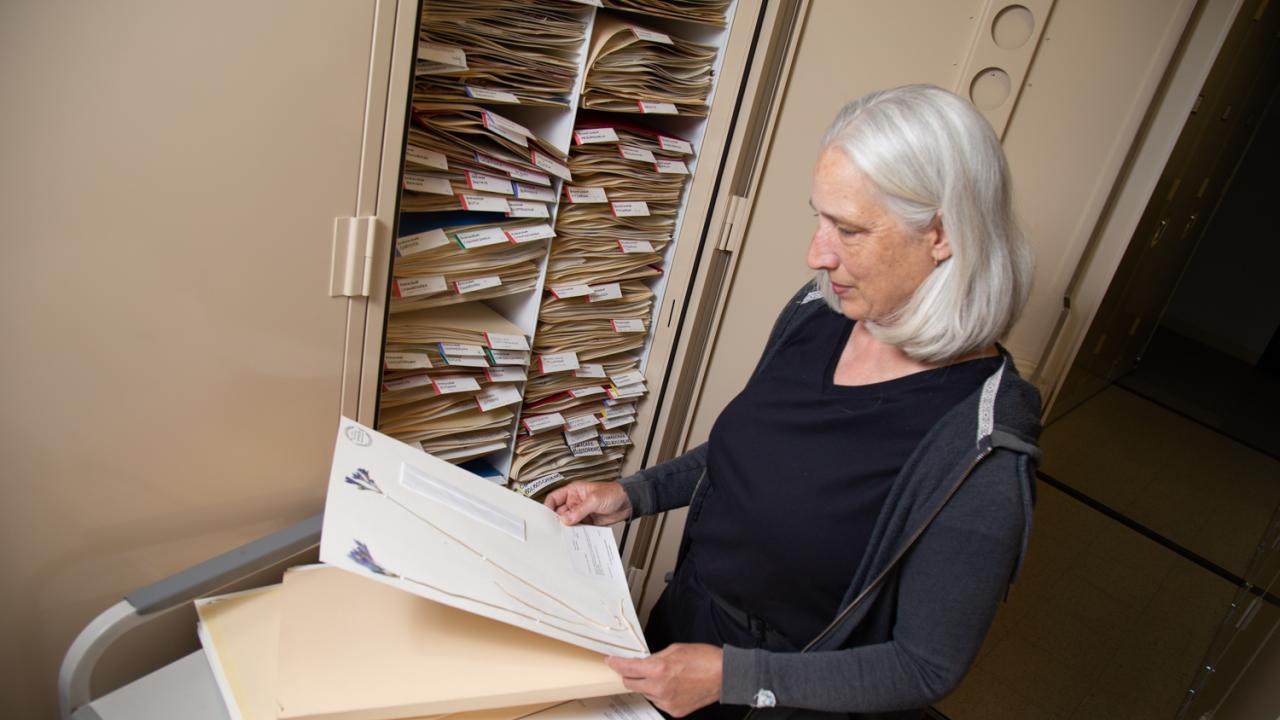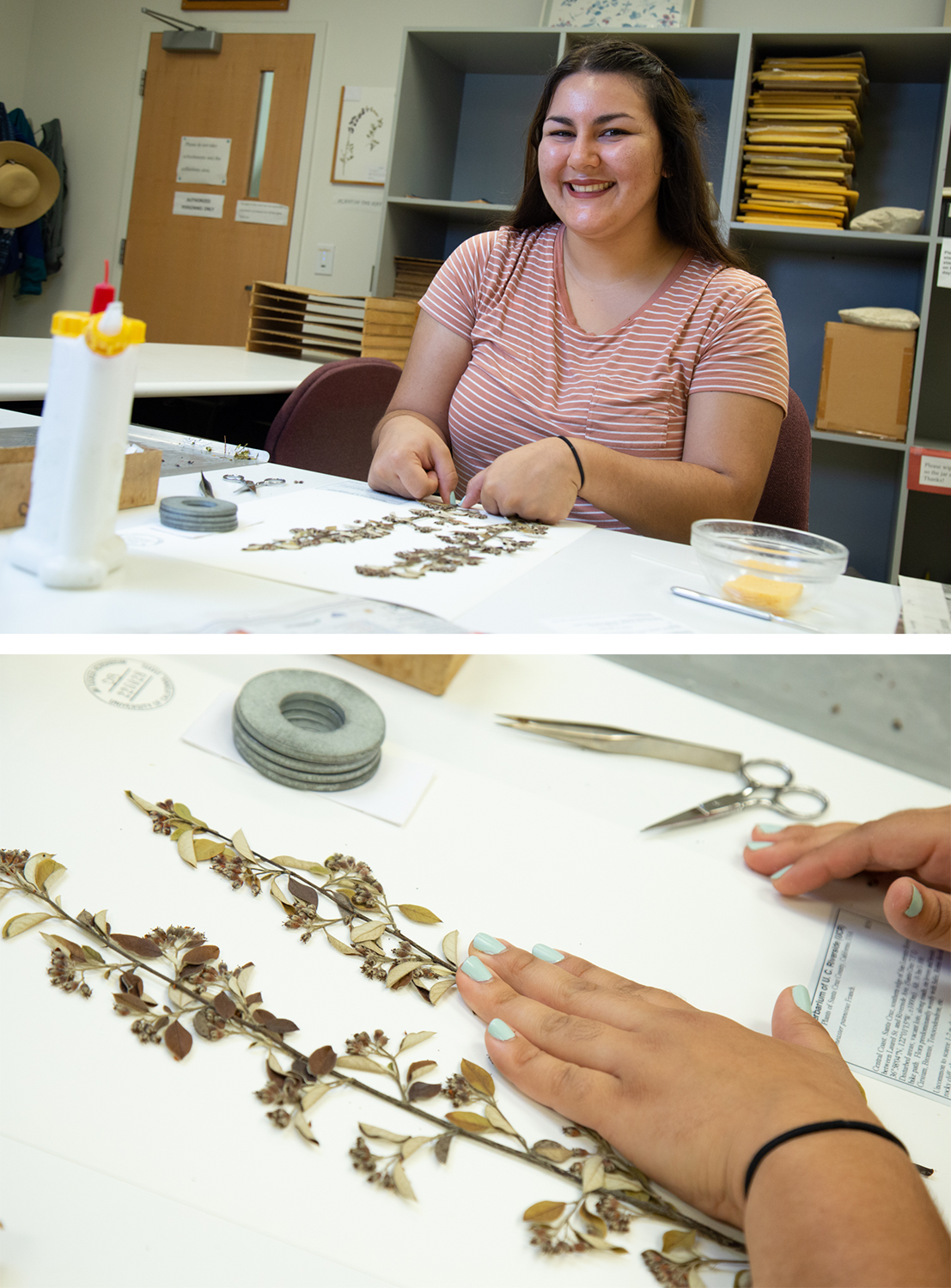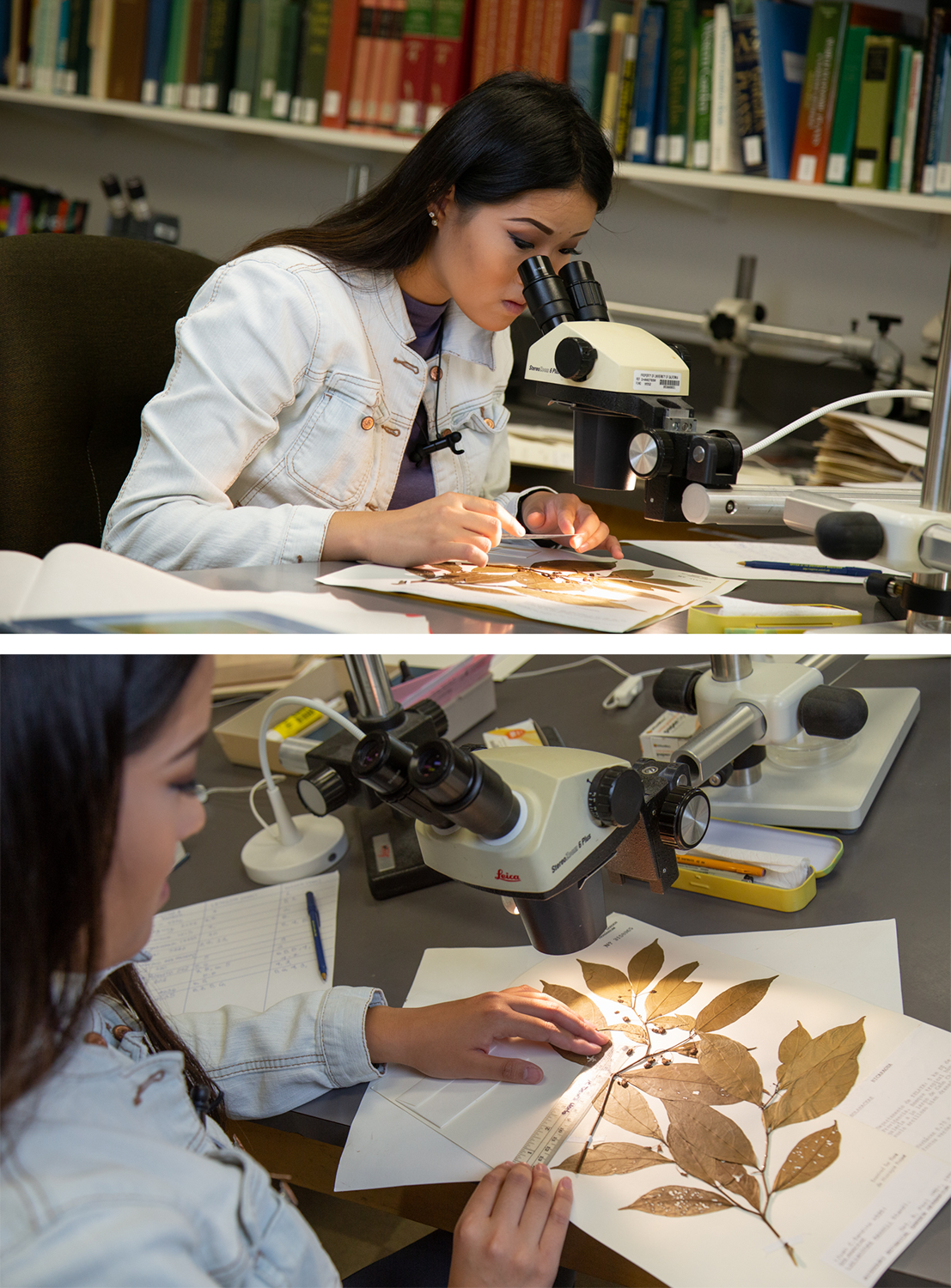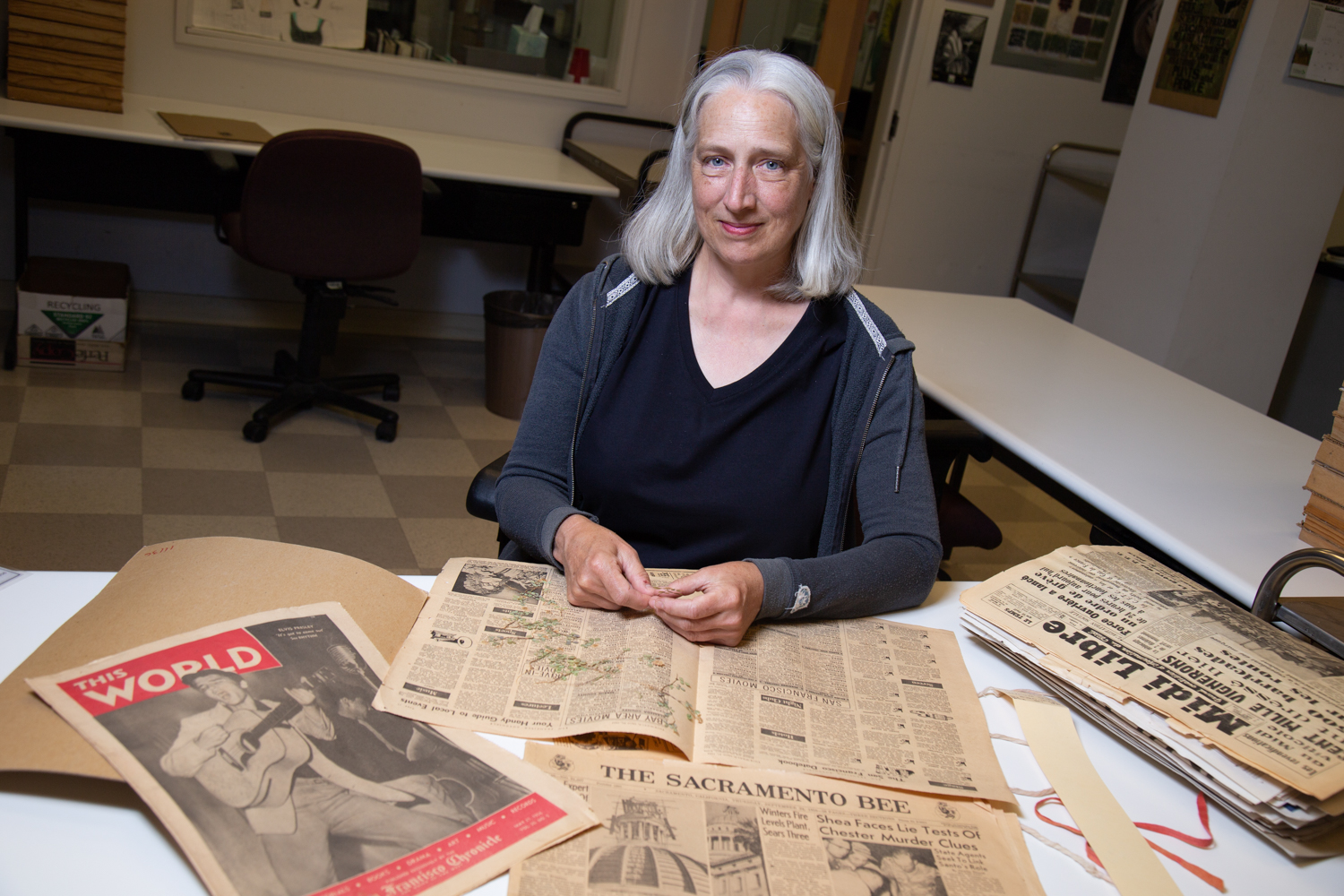
Every Plant Has a Story: Ellen Dean and the Center for Plant Diversity
Inside the Sciences Lab Building, tucked next to the Biological Academic Success Center, is a door with a placard reading, “UC Davis Center for Plant Diversity.” Step inside and you’ll find undergraduates working at tables, curating and prepping dried plants for display and storage. Around 350,000 dried specimens are stored in the center, organized in phylogenetic order. There are algae, lichens, ferns, angiosperms and much more.
And overseeing this massive resource is curator Ellen Dean.
For more than 20 years, Dean has made the Center for Plant Diversity a passion project. Researchers, farmers and others across California seek her plant identification expertise and access to the center’s many hidden treasures, which tell tales from times long past.
Slowing down to appreciate the pace of plants
Dean’s path to the UC Davis Center for Plant Diversity started in her hometown of Berkeley, California. As a child, she used plants as playthings and ingredients in make-believe concoctions.
“Most people aren’t drawn to plants as a child in our culture,” said Dean, noting the prevalence of stories and books based around animal characters. “In many parts of the world, people’s grandmothers teach them about plants. They have that sense of place and know the plants around them and use them for medicine and food.”
Dean’s mother—a Montessori teacher—taught her to appreciate the seemingly still elegance of plants, emphasizing that they really come to life when one slows down to appreciate them.
While Dean’s appreciation for plants ran deep, she initially thought her academic interests lay in animal biology and behavior. But a biology course at her alma mater, Stony Brook University, shifted her mindset.
“There was this lab where you had to dissect a frog and ablate a nerve and still watch all its functions, and I just couldn’t do it,” said Dean. “I became a botanist at that moment.”
After graduating, Dean landed a lab position in Columbia University’s Department of Biological Sciences. There, she studied nematode neurobiology but continued nurturing her interest in plants. She audited courses, taught herself plant biology and eventually secured a position in the New York Botanical Garden’s herbarium, where she stayed for about a year and a half. Other jobs followed, including a stint as a forest botanist, but Dean soon decided to head back to the West Coast for graduate school. In 1995, she graduated from UC Berkeley with a Ph.D. in Integrative Biology. She joined the staff of UC Davis shortly after.

The who, what, where and why of plant collection
In the Center for Plant Diversity, every specimen tells a story. Besides using the facility for plant identification and taxonomy, people, according to Dean, come here for the stories. Each curated specimen has a label filled with as much information as possible about its collection. Where was it collected? Who collected it? And when?
“That’s something I’m extremely taken with,” said Dean. “With herbarium specimens, you get to know the collectors and each label adds a little story about their life.”
“I sort of feel like it’s a gift that I’ve been given to keep track of all this,” she added.
The specimens are windows into history, providing researchers with clues about past climates. But they also tell tales of scientists past. Like that of botanist Katherine Esau, a pioneer of plant anatomy.
Esau spent nearly 35 years at UC Davis, starting at the university with a graduate assistantship. After receiving a doctorate, she joined the faculty in 1931. During her lifetime, she received many accolades for her research on diseased plants and overall contributions to the botany field, including a Guggenheim Fellowship, election to the National Academy of Sciences and the National Medal of Science. She also wrote the monumental textbooks Plant Anatomy and The Anatomy of Seed Plants.
“She became one of the most famous anatomists of all time,” said Dean. “I mean she’s one of those people that really helped make Davis great.”
Esau was instrumental in the herbarium’s formation and expansion, assisting W.W. Robbins, the founder of the university’s botany department. Esau expanded Robbins’ small collection, adding native plants from the Sacramento Valley and nearby Coast Ranges. Her career eventually took her to UC Santa Barbara in the 1960s.
“Most of her research materials left the campus, but we have her herbarium,” Dean said. “I like seeing her name on her specimens.”
"Even though I’m an NPB major, it helps to have some basic knowledge of plants in my back pocket. Especially when we were learning about plant medicines and herbal remedies for health." - Sarina Rodriguez, Neurobiology, Physiology and Behavior and Chicana/Chicano Studies

Student involvement
UC Davis students have opportunities to get involved at the Center for Plant Diversity. According to Dean, the facility employs between 10 and 12 undergraduate students each year. Student employees learn many skills, including how to use plant presses, create labels and mount dried specimens for display.
“By working at the herbarium, you really get a feeling for the plant families and genera,” said Dean.
According to her, in the last twenty years, the facility has focused on curating many untouched specimens collected during the past century.
“The other really fun thing about herbaria is the stories the newspapers tell,” said Dean.
When pressing plants, taxonomists usually use newspapers to contain the plant material. The plant press is then placed in a heated, cupboard-like area, where it sits for several days to dry.
“Not only are the specimens windows, but the newspapers are windows into the time period when the plant was collected or stored,” she said. “The Center for Plant Diversity preserves so much that is important about UC Davis.”
" We all share the same passion. The environment is very educational and people here are very kind. Phenology, evolution and taxonomy – Ellen really hones it in and helps you learn more about fields like that." - Hannah Kang, Plant Biology

